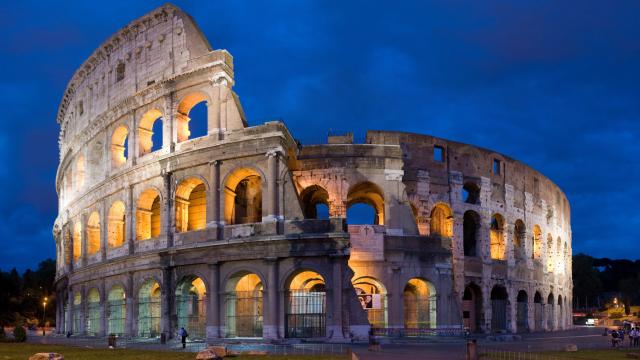In 1982, the ground beneath the historic port city of Pozzuoli began to rise like a cake in the oven. Within two years, the swell had exceeded 1.8m. Then the earth started shaking — first, a swarm of microquakes. When the first magnitude four quake hit, Pozzuoli became a ghost town overnight.
Tiziana Vanorio, a geophysicist at Stanford University, was a teenager when the seemingly apocalyptic events forced her family to flee Pozzuoli along with the city’s 40,000 other residents. Now, over thirty years later, Vanorio seems to have discovered what caused the 1982 phenomenon that first sparked her interest in geology: A fibre-reinforced, concrete-like rock, formed in the depths of the nearby supervolcano Campi Flegrei.
It gets weirder. The ‘natural concrete’ Vanorio found in Campi Flegrei is similar to the legendary concrete used by the ancient Romans to construct the Pantheon, the Colosseum, and numerous shipping ports throughout the Mediterranean. It’s so much of a coincidence, Vanorio now suspects the Romans invented their concrete came after observing the natural chemical reactions occurring around Pozzuoli.
Pozzuoli and Campi Flegrei both lie within a caldera — a large depression pockmarked by craters from previous volcanic eruptions. While ground swelling is a common sight at calderas around the world, including Yellowstone and Long Valley in the United States, the speed and size of the 1982 swell at Pozzuoli was unprecedented.
“It usually requires far less uplift to trigger earthquakes at other places,” Vanorio said. “At Campi Flegrei, the micro-earthquakes were delayed by months despite really large ground deformations.”
To learn why the Pozzuoli caldera was able to withstand such incredible strain without cracking, Vanorio and her colleagues examined rock cores collected during a 1980s drilling expedition. Within these cores, they quickly identified the caprock — a hard, volcanic-ash rock layer found near a caldera’s surface — and discovered that it was full of tobermorite and ettringite, two fibrous minerals also found in manmade concrete. These minerals, the researchers say, are what makes Campi Flegrei’s caprock so darn pliable.
What’s more, the researchers were able to show that these concrete-like minerals formed through a series of reactions known as decarbonation. That’s what happens when hot, mineral rich water interacts with limestone, forming carbon dioxide and calcium hydroxide gases. The ancient Romans might have observed a similar decarbonation process taking place near the surface surrounding Pozzuoli, and exploited it to form their famous concrete.
“The Romans were keen observers of the natural world and fine empiricists,” Vanorio said in a statement. “Seneca, and before him Vitruvius, understood that there was something special about the ash at Pozzuoli, and the Romans used thepozzolana to create their own concrete, albeit with a different source of lime.”
Vanorio believes that the same chemical reactions responsible for forming the caprock at Campi Flegrei probably triggered the 1982 swell. If decarbonation happens too quickly, excess CO2 and steam will rise toward the surface of the caldera, warming and swelling the rock. As soon as the ground begins cracking, these pent-up gases vent into the atmosphere and the swelling subsides.
So there you have it, folks: A 2000-plus year old mystery and a thirty year old mystery, solved in one fell swoop with a little geology. The ways in which nature can spark innovation never cease to amaze me. But the fact that complex geochemical reactions might have inspired one of the most iconic building materials in human history… well, I guess it’s no wonder Romans conquered the ancient world.
Top image: The Colosseum at dusk, via Wikimedia
